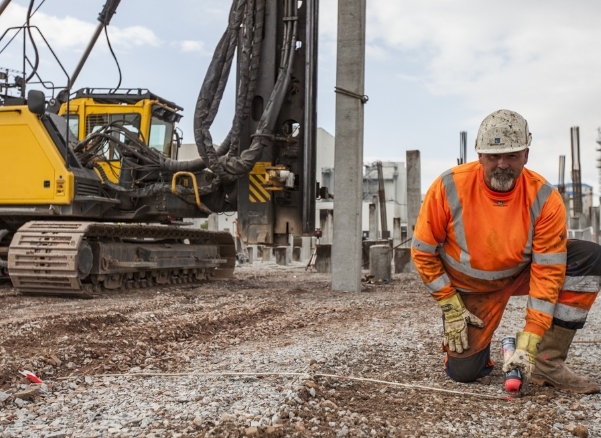Nordic Geotechnical Meeting
Categories:
Company NewsNordic Geotechnical Meeting and Baltic Sea Geotechnical Conference
Aarsleff Ground Engineering’s Managing Director Kevin Hague was pleased to present a technical paper on Raked Piles for Abutment: The benefits of Driven Precast Concrete Piles for Low Carbon Infrastructure, at the 18th Nordic Geotechnical Meeting.
Large infrastructure projects are often complex structures in terms of geometry, loading and soil conditions; hence the necessity of having robust foundations often resulting in piled solutions. The prevailing installed pile type in different countries is often based on local traditions supported by local standards, however Kevin’s live presentation and technical paper identifies that precast driven piles can offer a robust, sustainable and effective piling solution for a variety of civil engineering and infrastructure projects. An abutment at the Victoria and Widnes viaduct, part of the Mersey Gateway Project, constitutes the case investigated. Kevin’s presentation and the research paper demonstrates the low carbon credentials of driven precast concrete piles and highlights several other key benefits that can be realised from adopting a precast pile solution relating to reduced vehicle movements, immediate construction capability, zero spoil removal, high level of quality control, cost savings and waste reduction.
Please download the technical paper here.
Aarsleff Norge AS’ Tender Manager Jan Kreuziger also presented at the 18th Nordic Geotechnical Meeting on How Deep Foundations for a 245-metre skyscraper were installed in hard rock and soft clay (Results from a ground engineering case study in Gothenburg, Sweden).
Please watch Jan’s video presentation here.
Based on the Karlatornet case study in Gothenburg, Jan’s video presentation intends to demonstrate how a unique foundation technology can support a 245-metre-high skyscraper in complex ground conditions using large diameter segmental casing 65m deep into bedrock. The presentation identifies the design involved in piles that are constructed to withstand both soft clay and the extremely sloping rock at very deep depth, while also taking loads of 4500 ton per pile. The case study proves that it is possible to construct piles to withstand the weight and size of such a building, paving the way for new developments everywhere to be built without the fear of ground conditions being a limiting factor.
Please download the poster presentation here.
Finally, Per Aarsleff A/S’ Design Managers Ole Møller and Søren Juel Christensen also presented at the conference, delivering a video presentation on ‘Anchoring of a retaining structure with glass fibre strand anchors’ with Ms Kirsten Malte Iversen from COWI A/S.
The virtual conference took place on the 18th-20th January 2021, and addressed urban geotechnics, with topics varying from modelling to climate change, to the potential of the circular economy.
The aim of the meeting is to strengthen the relationships between practicing engineers, researchers, and scientists within the fields of geotechnics, foundation and environmental engineering including ground improvements with special emphasis on the Nordic region.
The theme ‘urban geotechnics’ twined the global trends together with regional and local problems in geotechnical engineering. Topics addressed during the two-day conference covered a range of geotechnical engineering:
- Climate change
- Geotechnical engineering in cold regions
- Ground freezing
- Statistical methods and reliability based design.
- Ground Improvement methods
- Eurocode and standardization
- Slope stability and other geohazards
- Soil and rock investigations (incl. Geophysical methods)
- Monitoring and digital solutions (big data and data mining)
- Modelling
- Case histories
- Foundations and deep excavations
- Transport infrastructure
- Circular economy and environmental impacts
Full programme can be viewed here.
The Latest. News, podcasts & projects






